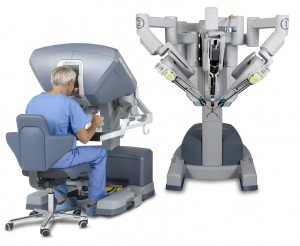pportunities for precision, micro injection-molded components—plastics and metal—will grow as robotic, minimally invasive surgery becomes a bigger factor in the medical market.

One example is the da Vinci Si system from a publicly traded company called Intuitive Surgical (Sunnyvale, CA), which was founded in 1995 to commercially develop inventions made at Stanford, MIT, IBM, and other institutions that combine advances in computing, electronics, imaging, algorithms, and mechanical components.
Open surgery is still predominant, but may soon be on the critical list. The new surgeon sits at a control station that looks like something out of Star Wars, manipulating camera-guided equipment that can work through an incision just one inch wide—or less. Surgeons view a high-resolution, 3D image of the surgical field.
A surgeon’s natural hand movements are performed on instrument controls at a console. They are translated into corresponding micro-movements of instruments positioned inside the patient through small ports.
The results in outcomes are impressive:
- Less blood loss,
- Fewer complications,
- Shorter hospital stay (often just one day), and
- Minimal scarring.
Target yearly procedures in the U.S. include urology (150,000) gynecology (500,000), general (175,000), cardiac (75,000), thoracic (75,000) and head and neck (25,000). The company has 1789 units installed in the U.S. and 400 in Europe, and projects 24% growth in procedures this year.






